
The Mongol Empire invaded and conquered much of Kievan Rus' in the mid-13th century, sacking numerous cities including the largest such as Kiev and Chernigov. The Mongol siege and sack of Kiev in 1240 is generally held to mark the end of Kievan Rus' as a distinct, singular polity. Many other Rus' principalities and urban centres in the northwest and southwest escaped destruction or suffered little to no damage from the Mongol invasion, including Galicia-Volhynia, Novgorod, Pskov, Smolensk, Polotsk, Vitebsk, and probably Rostov and Uglich.

Pskov is a city in northwestern Russia and the administrative center of Pskov Oblast, located about 20 kilometers (12 mi) east of the Estonian border, on the Velikaya River. Population: 193,082 (2021 Census); 203,279 (2010 Census); 202,780 (2002 Census); 203,789 (1989 Census).
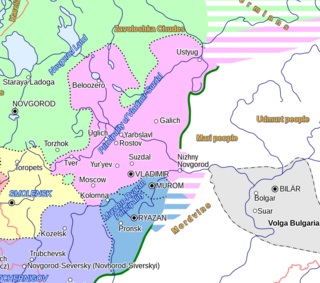
Vladimir-Suzdal, formally known as the Principality of Vladimir-Suzdal or Grand Principality of Vladimir (1157–1331), also as Vladimir-Suzdalian Rus', was one of the major principalities that succeeded Kievan Rus' in the late 12th century, centered in Vladimir-on-Klyazma. With time the principality grew into a grand principality divided into several smaller principalities. After being conquered by the Mongol Empire, the principality became a self-governed state headed by its own nobility. A governorship of principality, however, was prescribed by a jarlig issued from the Golden Horde to a Rurikid sovereign.

The Russkaya Pravda was the legal code of Kievan Rus' and the subsequent Rus' principalities during the times of feudal division. It was written at the beginning of the 12th century and remade during many centuries. The basis of the Russkaya Pravda, Pravda of Yaroslav was written at the beginning of the 11th century. The Russkaya Pravda was a main source of Kievan Rus' law.
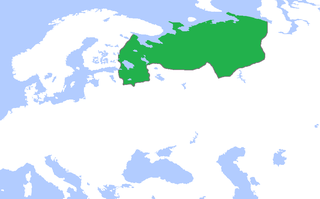
The Novgorod Republic was a medieval state that existed from the 12th to 15th centuries in northern Russia, stretching from the Gulf of Finland in the west to the northern Ural Mountains in the east. Its capital was the city of Novgorod. The republic prospered as the easternmost trading post of the Hanseatic League, and its people were much influenced by the culture of the Byzantines, with the Novgorod school of icon painting producing many fine works.

The Polans or Polians, also known as Polanians, Polianians, and Eastern Polans, were an East Slavic tribe between the 6th and the 9th century, which inhabited both sides of the Dnieper river from Liubech to Rodnia and also down the lower streams of the rivers Ros', Sula, Stuhna, Teteriv, Irpin', Desna and Pripyat.

The modern administrative-territorial structure of Russia is a system of territorial organization which is a product of a centuries-long evolution and reforms.

A smerd was a free peasant and later a feudal-dependent serf in the medieval Slavic states of East Europe. Sources from the 11th and 12th centuries mention their presence in Kievan Rus' and Poland as the smardones. Etymologically, the word smerd comes from a common Indo-European root meaning "ordinary man" or "dependent man".
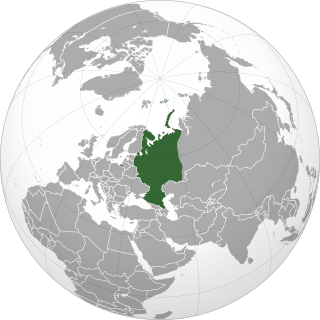
European Russia is the western and most populated part of Russia. It is geographically situated in Europe, as opposed to the country's sparsely populated and vastly larger eastern part, which is situated in Asia, encompassing the entire northern region of the continent. The Ural Mountains divide Russia into two parts, bisecting the Eurasian supercontinent. European Russia covers the vast majority of Eastern Europe, and spans roughly 40% of Europe's total landmass, with over 15% of its total population, making Russia the largest and most populous country in Europe.

Medieval demography is the study of human demography in Europe and the Mediterranean during the Middle Ages. It estimates and seeks to explain the number of people who were alive during the Medieval period, population trends, life expectancy, family structure, and related issues. Demography is considered a crucial element of historical change throughout the Middle Ages.

The term serf, in the sense of an unfree peasant of tsarist Russia, is the usual English-language translation of krepostnoy krest'yanin which meant an unfree person who, unlike a slave, historically could be sold only together with the land to which they were "attached". However, this stopped being a requirement by the 19th century, and serfs were practically indistinguishable from slaves. Contemporary legal documents, such as Russkaya Pravda, distinguished several degrees of feudal dependency of peasants. While another form of slavery in Russia, kholopstvo, was ended by Peter I in 1723, the serfdom was abolished only by Alexander II's emancipation reform of 1861; nevertheless, in times past, the state allowed peasants to sue for release from serfdom under certain conditions, and also took measures against abuses of landlord power.
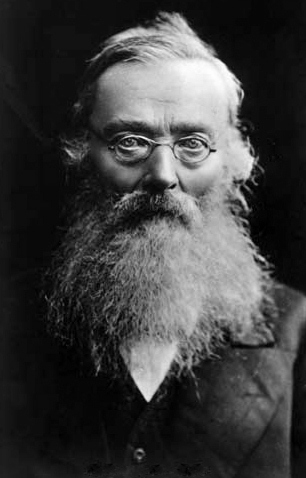
Mykola Ivanovych Kostomarov or Nikolai Ivanovich Kostomarov was one of the most distinguished Russo–Ukrainian historians and the father of modern Ukrainian historiography, a Professor of Russian History at the St. Vladimir University of Kiev and later at the St. Petersburg University, an Active State Councillor of Russia, an author of many books, including his famous biography of the seventeenth century Hetman of Zaporozhian Cossacks Bohdan Khmelnytsky, the research on the Ataman of Don Cossacks Stepan Razin and his fundamental 3-volume Russian History in Biographies of its main figures.

Kievan Rus', also known as Kyivan Rus' was a state and later an amalgam of principalities in Eastern and Northern Europe from the late 9th to the mid-13th century. The name was coined by Russian historians in the 19th century. Encompassing a variety of polities and peoples, including East Slavic, Norse, and Finnic, it was ruled by the Rurik dynasty, founded by the Varangian prince Rurik. The modern nations of Belarus, Russia, and Ukraine all claim Kievan Rus' as their cultural ancestor, with Belarus and Russia deriving their names from it, and the name Kievan Rus' derived from what is now the capital of Ukraine. At its greatest extent in the mid-11th century, Kievan Rus' stretched from the White Sea in the north to the Black Sea in the south and from the headwaters of the Vistula in the west to the Taman Peninsula in the east, uniting the East Slavic tribes.

The Rurik dynasty, also known as the Rurikid or Riurikid dynasty, as well as simply Rurikids or Riurikids, was a noble lineage allegedly founded by the Varangian prince Rurik, who, according to tradition, established himself at Novgorod in the year 862. The Rurikids were the ruling dynasty of Kievan Rus' and its principalities following its disintegration.

Veliky Novgorod, also known simply as Novgorod (Новгород), is the largest city and administrative centre of Novgorod Oblast, Russia. It is one of the oldest cities in Russia, being first mentioned in the 9th century. The city lies along the Volkhov River just downstream from its outflow from Lake Ilmen and is situated on the M10 federal highway connecting Moscow and Saint Petersburg. UNESCO recognized Novgorod as a World Heritage Site in 1992. The city has a population of 224,286 (2021 Census).

Novgorodian Land was one of the largest historical territorial–state formations in Russia, covering its northwest and north. Novgorod Land, centered in Veliky Novgorod, was in the cradle of Kievan Rus' under the rule of the Rurikovich dynasty and one of the most important princely thrones of the era. During the collapse of Kievan Rus' and in subsequent centuries, Novgorod Land developed as the Novgorod Republic: an autonomous state with republican forms of government under the suzerainty of the great princes of Vladimir-Suzdal. During the period of greatest development, it reached north to the White Sea, and in the east it spread beyond the Ural Mountains. It had extensive trade relations within the framework of the Hanseatic League and with the rest of Rus'. Muscovy conquered the Novgorod Republic in 1478, and annexed it in 1578, although Novgorod Land continued to exist as an administrative unit until 1708.

While slavery has not been widespread on the territory of what is now Russia since the introduction of Christianity in the tenth century, serfdom in Russia, which was in many ways similar to contemporary slavery around the world, only ended in February 19th, 1861 when Russian Emperor Alexander II issued The Emancipation of the serfs in 1861. Emancipation of state-owned serfs occurred in 1866.
The armies of the Rus' principalities emerged in the 13th century out of the military of Kievan Rus', shattered by the Mongol invasion of Kievan Rus'. The princely Rus' armies from 1240 to 1550 were characterised by feudalism, consisting of cavalry armies of noble militia and their armed servants.
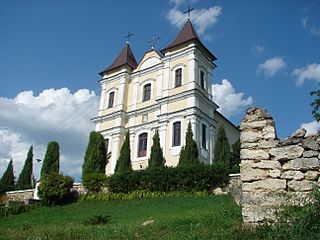
The history of Polish people in Transnistria goes back centuries when the communities along the lower Dniester river were part of Podolia in the Polish–Lithuanian Commonwealth and later the Russian Empire.
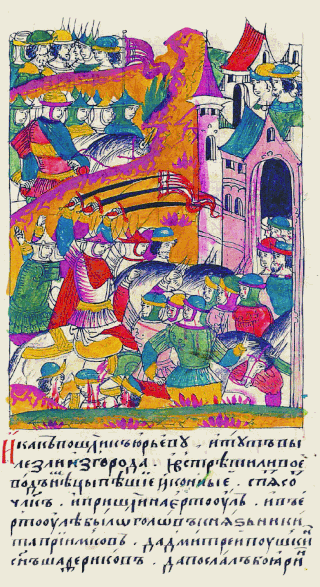
Russia suffered from an economic and social crisis in the second half of the 16th century which led to famines, depopulation and the abandonment of agricultural lands. The economic crisis overlapped with the oprichnina and happened at the time when Russia waged the Livonian War. The crisis is considered to be one of the precursors of the Time of Troubles.




















